All about the lilliputian lawns for the lazy
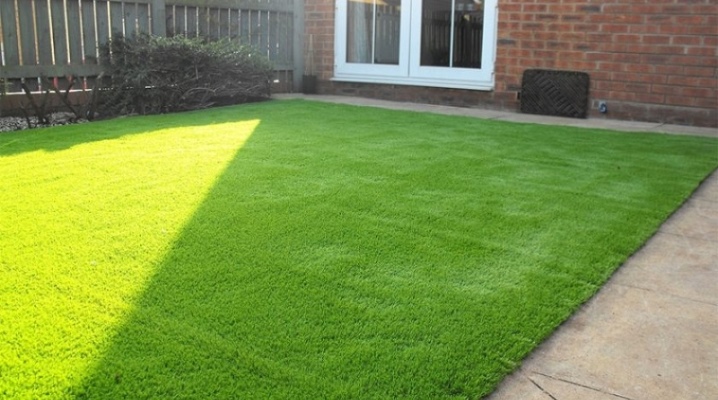
Who among the owners of personal plots has not dreamed of a rich green dense lawn? Some, thanks to backbreaking work (regular watering, haircut), manage to achieve the desired results. What others, due to certain events (lack of time, experience and knowledge), can only dream of.
Besides lawn grass is a rather whimsical crop, depending on the soil and climatic characteristics of the region. And therefore, the difficulty of working with it lies in the fact that it cannot be hidden under the roof of a greenhouse. In Russia, where there is a wide variety of both belts and climatic features, lilliputian lawn grass, delivered to us from Canada, has recently been in special demand.

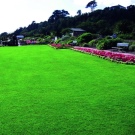
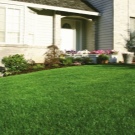
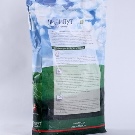
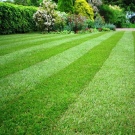
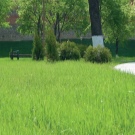
What it is?
Lilliputian lawn is the brainchild of a European manufacturer, which has been created over the years to get certain advantages. The nickname "for the lazy" grass got no coincidence. It reflects his essence, something like "planted and forgotten." "Lilliput" does not require, like other varieties, regular and painstaking care. The low-growing "midget" is a grass that does not require regular cutting.
As for the seedling of the culture itself, its percentage is quite high and, depending on climatic conditions, is almost 100%. The breeders managed to achieve such high results due to the fact that the composition of the seed mixture is a well-balanced variety of different varieties. And it turns out that if the soil for some parameters is not suitable for some seeds, then for others it will be the best option.
As for the consumption of material (seeds), it is also small. The characteristic notes that 30 grams of seeds are enough for one square meter.
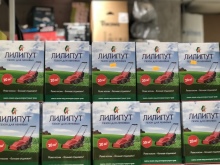

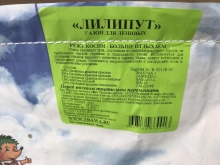
Varieties of lawn grass
There are three main varieties of lawn grass.
- Decorative.
- Grass for sports fields (football).
- Golf or polo grass.

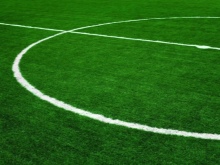

They are united by their unpretentious seed composition, which is one of the distinctive features of the brand. They differ in the maximum grown length: for decoration, the norm is about 3 cm, and for sports grounds a little more than a centimeter (about 4 cm). As for the seeds for polo grounds, this is one of the elite varieties, characterized by a more uniform selection of seeds.
In addition, when planning to break the lawn, it is worth considering the fact that with the seeds of "midget" a living lawn can be obtained even on the shady side, famous for its dampness, where the sun's rays are rare. As you know, real grass needs sun, otherwise it won't grow.
The Lilliput product line has in its collection a series of seeds designed for areas with little sun.
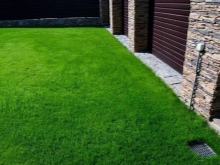

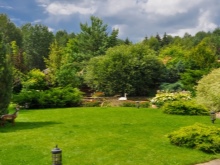
Description of the composition
Any seed mix contains at least 7 different grassland options. These are fescue (red, hair-like, modified), meadow bluegrass, bent grass (thin and victorious). This is a formulation renowned for its fast emergence, stamina and regenerative functions. The variety of all herbs is presented in equal proportions (approximately 1/25 each). Such a composition is necessary, let's say, for "reinsurance". If for some reason one variety withers, then by that time another begins to ripen. But, as noted above, if the soil is not suitable for one variety, then another actively grows in its place.All seeds that make up the complex are perennial and undersized, which completely excludes the "suppression" of one species by another.
An indisputable plus is the fact that the grass is a perennial plant, and besides, it is slow-growing. That allows you to make the first haircut in the second year after sowing. Probably the smallest plant, the midget is a very hardy crop that is not subject to trampling. On such lawns, you can break gazebos, regularly engage in amateur outdoor activities. After that, the planting will still remain soft to the touch and rich green. Of course, for urban street stadiums, where mass sports events are often held, it is better to choose seeds designed for such loads.
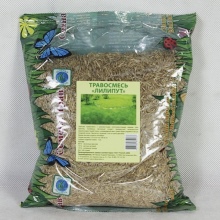
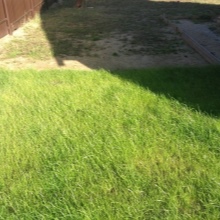
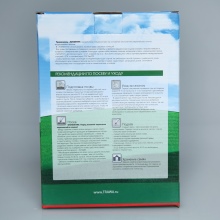
Sowing features
Planting in spring is preferable, although winter varieties are available. Experts associate the choice with the peculiarities of the climate. Where winters are harsh, cold comes early, and the shoots of sown winter grass can simply freeze. Before sowing, a broken lawn should be properly prepared to avoid certain future problems. First, it is worth taking care of feeding the soil, as well as treating it from pests and weeds. Today, store shelves are full of a wide assortment of goods that can solve all the problems noted. But, according to experts, a win-win option and absolutely safe to use is a top dressing called Fertika.
Having cleared the area allotted for the lawn from unnecessary items, apply according to the instructions, "Fertik" on the soil and dig it up. We leave it for a day or two so that the product is absorbed. After that, it is recommended to wait another 5-7 days for the weed remaining in the ground to germinate, which must also be removed.
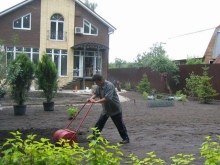

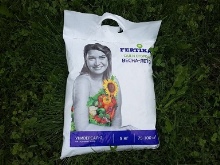
Treat the remaining weed if desired. Only the choice of means must be approached consciously, avoiding homemade strong concentrates that can destroy the midget grass.
When the soil is ready, you can plant the seeds in a way that suits you. The main thing is that they hit the ground up to about 3 cm deep. If higher, then it can be washed out by rains, destroyed by insects or birds. To avoid this, small lawns can be covered with cellophane wrap. If there is such an opportunity, then the seeds can be immersed to a depth of just over 1 cm, which will ensure the fastest germination. As you can see, in order to plant a "midget" in the country, the gardener needs to decide on the location of the future lawn and take it seriously.
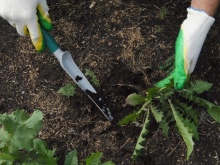
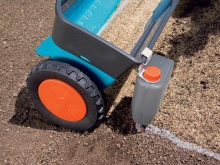
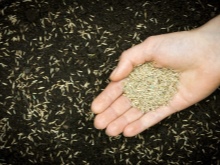
Care rules
With proper sowing, the Lilliputian grass does not require special care. She, which does not require numerous mowing, rises quickly enough. And in a short period it recovers after any impact (children's games, installation of a gazebo, swing, etc.).
If you notice that weeds are making their way through the grass, then it is better to remove them with your own hands than with a hoe or lawn mower. Since manual weeding helps to remove the weed from the root, which prevents its revival. Light frosts are not terrible for the grass, in warm regions it will remain green even with snow. But during a drought, it is better to provide the lawn with evening watering, at least 2 times a week.
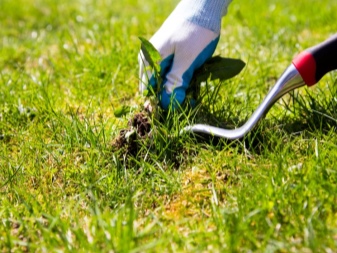
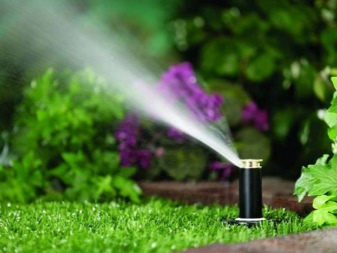
When planning a picnic on a personal plot, it is not recommended to install a low barbecue on the lawn (especially its imitation of bricks). After such temperatures, the lawn will definitely not recover; it will have to be repaired by over-sowing seeds. If you notice that the grass in clumps or through the stem began to turn yellow or turn brown, then this indicates the incidence of the culture (fusarium or anthracnose).
To preserve the lawn, it is necessary to dig up the affected part as soon as possible. In its place, sow new seeds, sprinkling them with a layer of new earth.To prevent crop diseases (the need directly depends on weather conditions), it is recommended to treat the lawn with prophylactic agents 2-3 times a season.

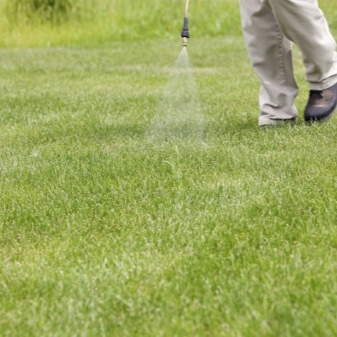
Watering
As noted above, the midget grass during cultivation does not imply watering that is exhausting for the gardener. But at the stage of germination, in some cases, it needs irrigation. We are talking about excessively dry soil, which can become an obstacle to the penetration of young growth. If you notice that the soil on the sown lawn is so dry that it cracked, then immediately moisten it with water. For this, both a watering can and special irrigation devices are suitable. Just remember that strong pressure can knock seeds out of the ground. Especially if they were submerged by about 1 cm.
Also, a newly sprung lawn may need watering (about 1 time in 2-3 days) if the summer is too hot. On such days, in order to prevent burning of young foliage, it is better to irrigate after sunset.
It is better not to water the lawn formed in the shady side at all, since excess moisture and lack of the required amount of sun will lead to the appearance of moss. Or, excess moisture will cause excessive acidity, and this, as a rule, leads to lawn disease.
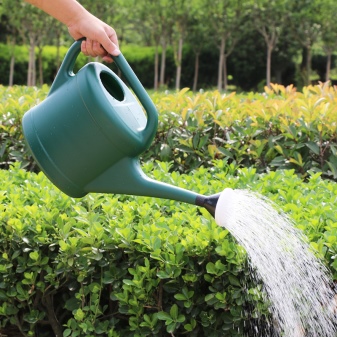
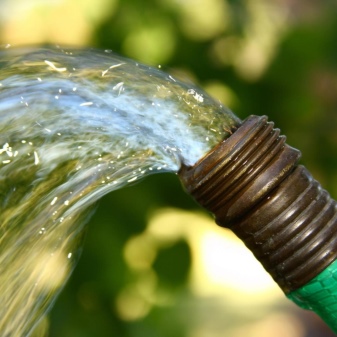
Mowing
We have already noted that the lawn does not need to be mowed regularly (at least once a year). And then it all depends on the desire of the owner. Since the grass in the second year of germination will fluctuate from 3 to 8 centimeters, if necessary, you can leave it intact. Well, when you still want to be shorter, then you should not forget, in order to avoid destruction, you should still leave a length of at least 3 cm.As for, for example, football fields, the recommended length of grass on the lawn should be at least 4 centimeters.
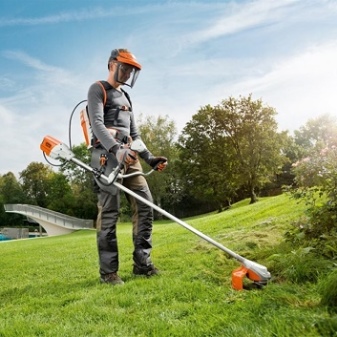
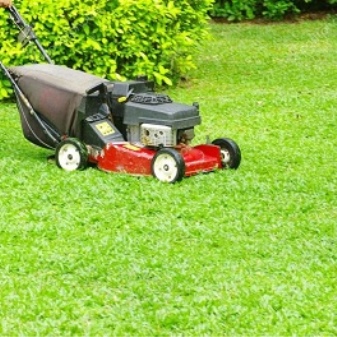
Top dressing
Despite the fact that the grass "Lilliputian" is rarely mowed less actively and often pulls out the substances necessary for restoration from the soil, as other plants do, but the soil sown with perennials still needs feeding. This is due at least to the fact that there is no change of cultures in the same place. Agronomists argue that it is impossible to plant the same crop in the same place for a long time, which leads to an absolute impoverishment of the soil. And if you do not want one fine year to get a complete or partial absence of seedlings, then you should think about feeding.
These works must be carried out at least twice a year: in spring and autumn. And it will be better if it is carried out directly on the soil (before the emergence of the grass and after its wilting). Since most fertilizers, falling on the leaf, cause burns or wilting. You need to take this point into account when choosing a top dressing. The only thing that is obvious is that it must contain fertilizers vital for the plant, such as phosphorus, nitrogen and potassium.
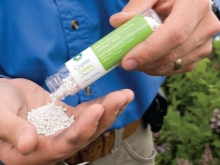
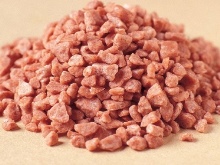
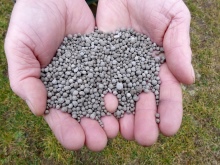
Overseeding
A lawn carpet, if maintained and properly laid, can last more than eight years. But, as they say, nothing is eternal, and at the first signs of exhaustion (the appearance of bald spots, dryness in places), you need to think about overseeding. This, like the main sowing, is recommended in spring or autumn. In order to avoid losing the aesthetic appearance of the lawn, it is impossible to sow seeds only in those places where defects were noticeable (especially if the lawn is several years old). This will lead to uneven germination: a young seedling will be noticeable in one place, and noticeably outdated in another.
Such overseeding is permissible on small plots of land if the lawn has been slightly damaged due to certain events. To avoid this, it is necessary to mow the grass as low as possible, dig up the ground, sow seeds and sprinkle them with new peat (purchased or taken elsewhere). It is better to use the same variety of seeds, since the "old" ones on the renewed soil will continue to germinate.
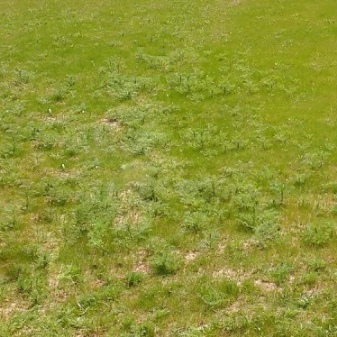
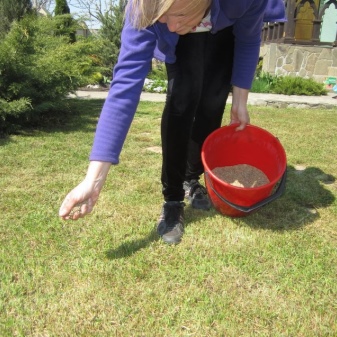
Review overview
Consumer reviews are overwhelmingly positive.Everyone notes that with minimal effort, you can get a dense, rich green carpet on your backyard. "Lilliput" or, as it is also called, dwarf grass is resistant to low temperatures and any other external influences. In addition, as noted by consumers, the grass, thanks to its soft leaf, densely enveloping the stem, has a noticeable softness and silkiness. That allows even young children to run barefoot on it.
Besides, users note that it is better to use the seed on a flat area, since the grass does not grow much in length, and the bumpy surface can give out patches of un-seeded land. The only thing that customers are unhappy with is the high price. A kilogram of such seeds costs about 500 rubles, while prices for lawn grass from another manufacturer range from 150 to 300 rubles.
Since the seeds are especially small, then, in order to avoid rare sowing (the earth can be seen), their consumption is quite high. More than 5 kg of seeds are required per thousand squares.
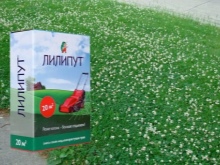
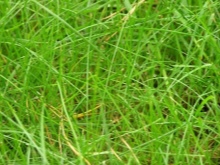
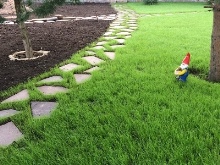
For information on how to sow a lawn according to all the rules, see the next video.



































































The comment was sent successfully.